POST WORKOUT HABITS: JACUZZI, ICE BATH, OR NEITHER?
Jarrett Pflieger
You just had your hardest training session of the week, your muscles are screaming, and you need relief now! Nothing looks more appealing than the hot steam rising up from a hot tub, urging you to come take a dip and ease your pain.
Although a nice warm bath or Jacuzzi feels great after a hard training session, it may not be the best thing for your muscles. In fact, it may even put a damper in your recovery. After a hard workout, you actually damage your joints and muscles. No, not serious damage like an injury, but micro-trauma that causes your muscles to become inflamed and swollen. Your body healing from this is what allows you to adapt and become stronger, faster, etc.
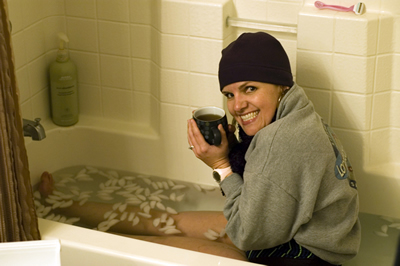 The faster you can reduce this inflammation and swelling, the sooner you will recover and be ready for your next workout. The best way to do this is with cold, not hot. A cold- water bath following exercise is believed to reduce swelling and breakdown of tissue, constrict blood vessels, and flush out waste products from your muscles like lactic acid. Scientific studies are mixed on the subject, but athletes that use cold-water baths swear by it. We say cold water, and not ice water, because the water does not actually have to be ice cold to get the benefits. “Ice” water can actually be less effective than just “cold” water that is around 50-60 degrees. Plus, it is much more tolerable.
The faster you can reduce this inflammation and swelling, the sooner you will recover and be ready for your next workout. The best way to do this is with cold, not hot. A cold- water bath following exercise is believed to reduce swelling and breakdown of tissue, constrict blood vessels, and flush out waste products from your muscles like lactic acid. Scientific studies are mixed on the subject, but athletes that use cold-water baths swear by it. We say cold water, and not ice water, because the water does not actually have to be ice cold to get the benefits. “Ice” water can actually be less effective than just “cold” water that is around 50-60 degrees. Plus, it is much more tolerable.
The time you should spend in the water varies in opinion. The most common duration is immersion for 10-14 minutes, but like most things, it probably varies depending on the individual. Just experiment with cold-water immersion in the bathtub, pool, ocean, etc. See how your legs feel the next day compared to what you felt like without cold-water therapy.
Another practice is to alternate cold and hot water for several cycles. For instance, try alternating one-to-two minutes cold, two minutes hot for around three cycles. Only submerge your legs and lower torso when trying any of these methods. It can be dangerous for your whole body to experience temperature change this rapidly. You should never try any of these methods without thoroughly cooling down after a workout for around 10-15 minutes. It is like putting hot metal in cold water, it just doesn’t mix well.
Try to experiment with some different techniques and record your results so you can go back, review your notes, and see what worked the best. One thing is for sure, the worst thing to do after a workout is to not cool down and just plop on the couch. You will take much longer to recover and will miss out on vital performance gain opportunities.
RACE REPORT: CARLSBAD HALF MARATHON
Ron Saetermoe
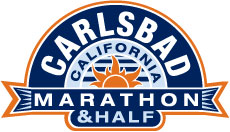 We had a great ride Saturday, January 23rd. Two years ago Larry (Lar Dog), Kirk Matkin (Matkin Design) and I made the same ride. This year it was Larry, Daniel, Camille and I.
We had a great ride Saturday, January 23rd. Two years ago Larry (Lar Dog), Kirk Matkin (Matkin Design) and I made the same ride. This year it was Larry, Daniel, Camille and I.
The idea was to ride down to Carlsbad to pick up our bibs for the half marathon the following day. Since it rained practically all week prior, our ride was in doubt, but the clouds broke and we went for it. I picked up a few more miles, and hills, just for fun. About 85 for me total.
I picked Lar Dog up at 6:00 a.m. Sunday for our 7:30 a.m. half-marathon start. The air was clear and crisp. I think it was high 40’s around start time and mid-50’s by the time we finished. Perfect!
Anyway, on the way down Larry and I were both complaining about how we felt after our spirited ride the day before. Neither one of us felt a PR coming on.
Larry was shooting for a 7:00 minute pace and I was shooting to finish – period!
We were seeded in the first wave (pretty cool idea, actually) and hit the first mile pretty hard. There was a large uphill climb over the I-5 so our first mile was 7:15. We were running along side a 1:35:00 pacer, which would be a great finishing time for me.
Mile two was quite a bit faster because we had to come down the same hill. Mile two: 6:30.
After that I simply waved goodbye to the Dog. Larry did a great job maintaining his 7:00 pace, but I fell back. My quads were toast from the day before. And while it hurt to run I knew that it would pay dividends later.
If you’ve never raced in Carlsbad you probably don’t know that the town really gets behind their sporting events (including the Carlsbad Triathlon). They literally close down the Pacific Coast Highway. The run along the ocean is great and inspiring.
Anyway, throughout the race I passed the 1:35:00 pacer guy, then he passed me, then I passed him. That’s pretty much how it went all morning. The crazy thing is that no one was running with him that I could see. I wouldn’t have run with him because he had no idea how to pace. One mile he’s running 8:00 pace and the next he’s at 6:30. What a goof!
The race seemed long and my pace slowed as the miles clicked by but I managed to finish in 1:37:51 (7:28 pace), which was good enough for 20th out of 225 finishers (9%).
I’ll take it!
BASE PERIOD
Ron Saetermoe
Two weeks ago I discussed the Adaptation Period of your training year. Most triathletes are probably still in this period now and looking forward to the Base Period.
The base period is when you’ll start building your “base” fitness, which will carry you through the rest of the year. At Triathica, all of our periods last nine weeks, but if you have time in your training schedule, it would do you good to add a couple weeks here in the Base Period.
By now your body should be quite adapted to a regular training regimen. You may still experience some muscle soreness, but it shouldn’t be as bad. Continue the hot/cold treatment to help relax the muscles and reduce the swelling.
One week from now I’ll be beginning my Base Phase of training. Keep in mind that no one trains exactly according to the ideal schedule. There are many factors that impact it. Family commitments, business travel, illness and other races. For this reason, you’ll need to back off on your training from time-to-time. When you do this, don’t try to make up for lost workouts. Depending on how many days you’ve missed you may have to ramp back up slowly.
I’ve been doing some half marathons so that obviously takes me out of my normal training routine. When it does, I gradually return to my training plan.
The key things about the adaptation period are:
– You attempt to stay on your training plan as much as possible
– You increase your training volume and intensity
– You regularly include resistance (strength) training
– You shouldn’t be as sore as you were in the Adaptation Period
– You include “brick” workouts every week (one to two)
Here’s what the ideal Triathica year looks like:

Again, we feel that three, three-week cycles within each period is optimal for building fitness and recovery. The time to build strength, speed and endurance is upon you. Make the best of it!
Cheers!
Ron
WHY TRAIN WITH A HEART RATE MONITOR?
Jarrett Pflieger
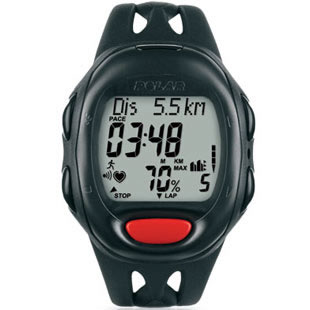 A heart rate monitor is a great tool that can make your training more efficient and increase performance, but many athletes out there haven’t taken the step to start using one. Heart rate monitors are easy to use, fairly inexpensive, and provide one of the largest bangs for your buck in terms of performance gains. Why so many continue to train without one is baffling, but hopefully this article will help some of you take that next step.
A heart rate monitor is a great tool that can make your training more efficient and increase performance, but many athletes out there haven’t taken the step to start using one. Heart rate monitors are easy to use, fairly inexpensive, and provide one of the largest bangs for your buck in terms of performance gains. Why so many continue to train without one is baffling, but hopefully this article will help some of you take that next step.
So why is a heart rate monitor so useful anyways? For one, it gives you a relatively accurate picture of what is going on in your body during training. You may think you are able to sustain a certain pace because you feel good, but a few minutes later you have to slow down or stop altogether. Heart rate monitors can prevent you from going out too hard and not finishing strong in training or races. On the other hand, they can also make sure you aren’t going too easy on yourself. Once you establish your personal heart rate training zones, you will know approximately what heart rate range you should try to sustain for different distances. Knowing your zones will help you pace yourself better, making your training more efficient and ensuring you give your all in races.
So how does one establish their heart rate zones? Well, each individual’s zones are different and vary from sport to sport (swim, bike, run, etc). That is why equations to determine your max heart rate like “220-age” are complete nonsense. There are some 50 year olds out there with higher heart rates than some 20 year olds. Max heart rate mostly depends on genetics. There are several methods to find your max heart rate in a sport.
Personally, I like to do a graded test where I start at a certain pace and keep increasing it every minute or so until I can’t go anymore. This gives a fairly accurate measure of your max heart rate, but it can also be very dangerous if you have any kind of health issues, some you may not even be aware of. The safest method would be to do the same test but stop short of maximum (8-9 out of 10 on the perceived exertion scale, 10 being absolute maximum). You can then estimate your max heart rate to be a few beats above that. Please consult a professional before performing a max heart rate test.
Once you know your max heart rate, you can then break it down into training zones. I like to use five zones, zone one being 50-60% of your max heart rate and zone five being 90-100% of your max heart rate. Then I experiment to see what my pace is at certain zones, and how long I can stay in the zones.
Another helpful number to know it your anaerobic threshold which is the point which your body produces more lactic acid than it can use, causing the burn in the muscles and eventual fatigue. This usually occurs around 65-95% max heart rate depending on the individual. The most successful athletes know what their AT is and can hold close to that pace throughout a race. Most of your training will be below this intensity, but it is still good to know. You can determine your AT by doing a 30-45 minute time trial since most athletes can sustain their AT for around that amount of time. Make sure the time trial is hard and you leave no juice in the tank. After the test, your average heart rate and average pace would be a good estimate of your AT.
Although you can’t really train to increase your max heart rate, you can train to increase your AT. When your AT increases, you are able to maintain a faster pace with less pain and fatigue. This, of course, translates into faster race times. Without a heart rate monitor, none of this type of training is available to you. It is best to not purely rely on the monitor, but also go from how your body is feeling. Once you can use the two in unison, you will be well on your way to setting new personal records.
TRIBUYS GOING OUT OF BUSINESS
Ron Saetermoe
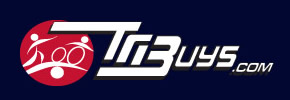 I received a very sad email yesterday from Cameron and Jennifer of TriBuys – the wonderful store they started in 2007 is closing.
I received a very sad email yesterday from Cameron and Jennifer of TriBuys – the wonderful store they started in 2007 is closing.
It’s a sign of the times unfortunately. Just within the last year we’ve seen four local institutions close: TriBuys, Fleet Feet, Ladera Cyclery and Ciell Cycling. It seems strange that the sport of triathlon is still growing but the businesses that support it are failing left and right.
Personally, I think a lot of triathletes can put off the purchase of a new bike, shoes or a wetsuit but they’ll continue to scrape together the money to race. I know I’m that way. Training and racing are in my blood. Sure, I’d love to get the new Zipp wheels but I’ll put the purchase off another season. I won’t, however, miss IM California 70.3 or IM Arizona!
We will miss all four of these businesses and I wish their owners the best.
Tribuys
11 A. Marconi (near Muirlands & Bake Parkway)
Irvine, CA 92618
949.837.8138
www.tribuys.com
TRIATHICA NOW OPEN 24/7
Ron Saetermoe
 That’s right, Triathica is now open 24 hours a day, 7 days a week!
That’s right, Triathica is now open 24 hours a day, 7 days a week!
We’re excited to bring this new feature to our membership because it gives you the flexibility to workout whenever you want. Please note that we will still have staff hours after February 1st but you should call before coming if you need to meet with a trainer.
So here’s how it will work for current members:
1. Call Ron at 949.795.1900 to arrange to pick up your key.
2. Sign the membership agreement addendum.
3. Come in and workout whenever you want!
New members will receive their personalized key when they enroll and begin using the facility immediately.
Please call if you have any other questions about this exciting new development.
Cheers!
Ron
Tips For Your First Race
Jarrett Pflieger
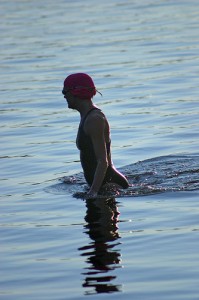
So you signed up for your first triathlon in 2010; that is a great first step. Now it is time to put in the work. The first thing you need to do is accept you will not have a perfect race, or set any course records your first time out. Too many athletes go into their first few races with their hopes set too high, which creates excessive nerves and a bitter feeling when they don’t live up to their own lofty expectations.
If you are the opposite and are afraid of being the last one across the line, I can guarantee that will not happen if you train hard and prepare yourself. Even if you are last across the line, think of all the people that didn’t finish. Even if you are unable to finish, think of the millions of people that don’t even have the ability or will to get out there and do this in the first place.
There is nothing wrong with not finishing, being slow, or not reaching your goal times. Once you stop thinking about that and concentrate on going out there and racing to your abilities, you will have a lot more fun and probably be faster as well.
Here are a few more tips on how you can have a successful race:
1.Train how you race
If you are racing a sprint distance, train for a sprint distance. If you train around an eight minute/mile pace, don’t expect to sustain a seven minute/mile pace in your race. Know the distances of your race and first make sure you can make it that distance. Only then should you concentrate on increasing your speed.
2. Relax
You are going to be nervous on race day; it is inevitable. Just make sure your nerves don’t overwhelm you and affect your performance. Always picture success in your mind and visualize your perfect race. This is supposed to be for fun, enjoy the day and don’t get too caught up in the competitiveness just yet.
3. Practice
If your first race is also your first day of training, you are probably not going to have much fun, unless you are already an experience swimmer, cyclist, or runner and/or in excellent shape. You need to practice everything you will be doing or could experience on race day including transitions, mounting/dismounting your bike, changing a flat, and of course swim/bike/run.
4. Don’ try anything new
Don’t try anything that you haven’t already done in training. That goes for pacing, race nutrition and fluid intake, equipment, technique, etc. Even experienced triathletes struggle with this, always looking for the last minute edge. More often than not, it ends up hindering performance.
5. Prepare for mistakes
You will probably make mistakes. Just prepare for them and accept them when they come. So what if you swim off course, just get your bearings back and head for the next buoy. Who cares if you go out too fast on the run and have to drop the pace a bit. Just be ready to correct any mistakes you make or just forget about them and move on.
ADAPTATION PERIOD
Ron Saetermoe
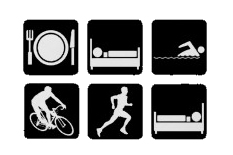
Here at Triathica we prescribe to the concept that your training year should be “periodized.” That simply means that the nature of your workouts will evolve as you get closer to your “A” (most important race of the season) race.
In our model, the first of five periods is called the “adaptation” period. This is the period way out front of your “A” race. It is also the period where you’re just coming back to working out after a hiatus or lull period.
Last year my “A” race was Ironman Arizona. After my big race I cut back on my training and have ignored any semblance of dieting. However, I’ve just completed my fifth week of my adaptation period.
The key things about the adaptation period are:
– You start back to a routine training schedule
– You maintain a light volume of training and moderate intensity
– You may incorporate some cross-training such as roller blading or skiing
– You’re likely to be sore because you’re getting back into your routine again
– You may miss workouts here and there without guilt
Here’s what the ideal Triathica year looks like:
 We feel that three, three-week cycles within each period is optimal for building fitness and recovery. The adaptation period is a necessary step so you can return to your training without injury or sickness.
We feel that three, three-week cycles within each period is optimal for building fitness and recovery. The adaptation period is a necessary step so you can return to your training without injury or sickness.
Cheers!
Ron
RACE REPORT: SOCAL HALF MARATHON
Ron Saetermoe
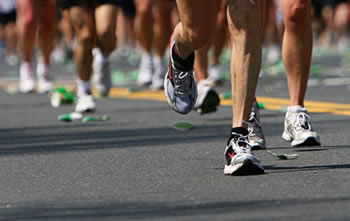 Early season racing is always tough. You’ve probably been overeating and under-training for at least a month. That’s exactly where I was when I did the 2010 SoCal Half Marathon on Sunday, January 9th.
Early season racing is always tough. You’ve probably been overeating and under-training for at least a month. That’s exactly where I was when I did the 2010 SoCal Half Marathon on Sunday, January 9th.
I’m one of those people that like to reward myself when I work especially hard. And since I worked my tail off in preparation for IMAZ I’ve been rewarding myself ever since. As a result I’ve gained six pounds. I’m not beating myself up about it, I’m just sayin.’
Actually, I have been working out. As of race day I had just finished the first four weeks of my 2010 IM training plan and hadn’t tapered for the ½ marathon. I did beat myself up pretty bad the week before and included resistance training and a couple of awesome CompuTrainer sessions (you know the ones where your legs are shaking when you get off your bike).
And while I had no reason to expect a PR (personal record) was in the cards for me, I decided to go hard anyway. Besides, Scott (Scooter) Calendar was going to shoot for 1:30:00 so I figured I’d run with him at his Garmin defined 6:52 mile pace until I blew up.
The race was great with a lot of friends there. The guy I really had to keep my eye on though was Stan Gertler. Stan is older than me but runs like a rabbit. And as it happened, Stan was staged just in front of me and Scooter.
The gun went off and Stan took off. Scott wanted to log the first mile a bit slower than our target rate to ease into a good pace. The first mile was 7:05, just exactly as Scott prescribed.
We started to pick up after that and we nailed a 6:50 pace for the next several miles, still on Stan’s heels. It was getting hard. My breath was labored and my legs were burning but I was going to hang on for all it was worth.
At about mile six I determined I couldn’t hang with Scott any more so I let him go. We waved at each other multiple times throughout the race. While I didn’t actually “blow up” my pace had slowed considerably, but it was “comfortable.” As comfortable as one can be with labored breathing and legs that are on fire!
The miles click by amazingly fast when you quiet your mind. I know Mark Allen really believes in this and I’m not sure if I’m doing it in the prescribed method but I get into a near trance after a while and time goes very quickly.
I hit every water stop other than the first one. This is a little bit of strategy I use. Generally, a lot of racers go out at a pace faster than they can hold so the first aid station, in particular, gets clogged up (I use this same strategy in century rides and SAG stops). After that I take water at every aid station.
No, I don’t drink Gatorade or take gels. I do take gels with me as insurance but I didn’t use any today. The reason is that many people tend to take in more calories than they need while racing. We were taught at our USAT training that the average male has about 3,000 calories in glycogen stores and women have about 2,000. If that were the case, I wouldn’t come close to burning that number of calories so water should be just fine.
Turns out, water was just fine and I managed to maintain a good pace for the entire race. 1:31:43 (7:00) a PR. Think I didn’t celebrate after that? Beer!
Next up, the Palm Springs century ride on Saturday February 13th followed by the San Diego half marathon on Sunday, February 14th. You game?
ANDY’S NEW LEG
Jarrett Pflieger
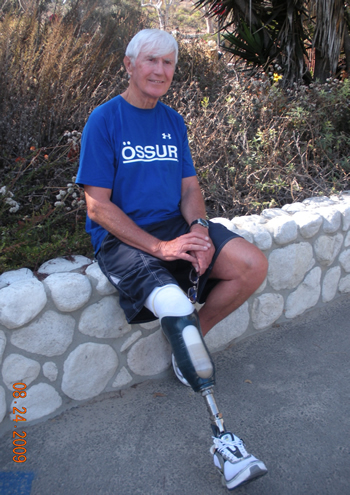 If you are an active part of the triathlon community here in Orange County, you have probably heard of, or even met, Andy Bailey. Andy is actively involved in the community, and can frequently be seen at meetings and functions of the Orange County Triathlon Club, Challenged Athlete Foundation, and more. The fact that Andy is still competing at 71 years old is amazing. The fact that Andy is still competing and is a single leg amputee right below the knee is downright incredible.
If you are an active part of the triathlon community here in Orange County, you have probably heard of, or even met, Andy Bailey. Andy is actively involved in the community, and can frequently be seen at meetings and functions of the Orange County Triathlon Club, Challenged Athlete Foundation, and more. The fact that Andy is still competing at 71 years old is amazing. The fact that Andy is still competing and is a single leg amputee right below the knee is downright incredible.
Andy was seriously injured on December 12, 2006 when a run-away delivery truck slammed into him while washing his car in the driveway. After the accident, he had an ankle fusion and a muscle graft and tried to save the leg for 14 months. Unfortunately it did not heal and he had to have his leg amputated. Since that day, it has been a battle to get back to doing what he loves, competing in triathlon.
Andy’s comeback has included several indoor triathlons with the Triathlon Club of San Diego and the 800-yard ocean swim in the Malibu Triathlon as part of the Challenged Athlete Foundation relay team. He also completed a 1.2 mile swim during the San Diego Triathlon Challenge as part of an Orange County Triathlon Club relay team.
One big part of his comeback has been a company called Ossur, who specializes in making prosthetics for walking and higher performance prosthetics for running.
It seems it was fate that brought the two together. Andy was at the Endurance Sports Awards banquet down in San Diego in 2008. It was right before his amputation that would take place on February 28, 2008. At the time of the banquet, the doctors were still trying to get his surgically repaired ankle to fuse. He was talking about his yearning to compete again, even if he happened to lose his leg. There happened to be the director of education from Ossur, Tabi King, sitting at his table who overheard the conversation. She gave Andy her info and told him to contact her if he needed anything in the future.
The next year, Ossur put on a special amputee running clinic at Soka University in Aliso Viejo. Andy wanted to attend, but didn’t have a run leg yet, so he called Tabi and told her the situation. Ossur was able to have a Flex-run leg ready in time for Andy to do the clinic. NBC even came out and did a news story on Andy and his new leg.
Since then, Andy has been named an Ossur Ambassador and helps promote Ossur products, serves as a model, and helps with occasional PR related activities.
Andy is currently working with Southern California Prosthetics here in Irvine, CA on a new cycling leg, which he has been testing out here at Triathica. The custom liner in this leg has made a huge difference in the healing of the skin from his injury, Andy explained.
Everything seems to be going great and I asked Andy what he was up to now.
“I just sent in my application for the Desert Triathlon Sprint in March. This will be my first individual triathlon since my injury. Then if all goes well, I’ll think about doing the San Diego Sprint Triathlon, Mission Bay, and maybe one of the Bonelli races,” he said.
For now, Andy is working hard to come back and prove, even at 71, you can do anything you put your mind to. In the short term, has his sights set on the Los Alamitos reverse tri where he will be doing the swim portion of the race with a group of other challenged athletes.


